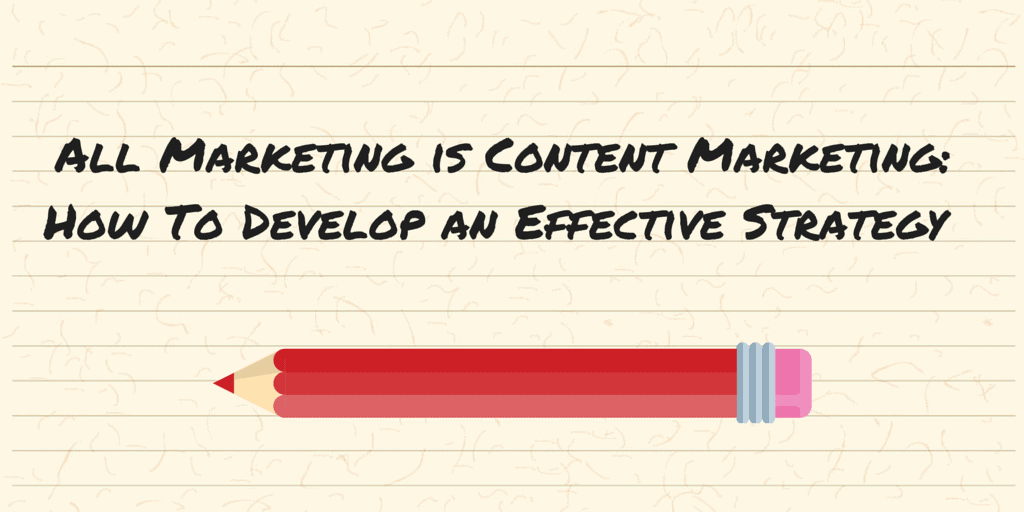As a CMO, your day-to-day revolves around the big picture. How do all the many individual moving parts in marketing combine to create the ideal marketing strategy? What with content, SEO, outreach, social media, PR, and traditional advertising to juggle, coming up with an overarching strategy is challenging. It’s tempting to get bogged down in the nitty-gritty – but you know that can put you at risk of losing sight of the big picture, unless you then turn around and use those details to inform your overall plan of attack.
Great read: The Evolving Role of the CMO: A Marketer For All Seasons
The good news is that there are ways to approach the creation of a solid marketing strategy that won’t make you crazy. One such way? Prioritizing all marketing activities under the header of B2B content marketing.
OK, yes, I have to admit to having some bias here, being a content marketer and all… But content is and must be the centerpiece of any effective marketing strategy, whether online or conventional.
Where would SEO keywords and links fit in, if not in the written content on a website or blog?
What would you share on social media to attract traffic to your site, if not blog posts and articles?
What would entice influencers to allow your company access to their hard-won audiences, if not quality content?
What are press releases, videos, infographics, white papers, commercials, print ads, sales collateral…if not content?
So the logical first step in developing an effective marketing strategy is to determine what kind of content your company will be creating, and then to move forward from there.
But how do you decide exactly what sort of content will be most effective for your company?
That’s where we can help. Ask yourself the following questions in order to come up with the ideal, customized plan of attack to fit your company’s needs, and develop a content marketing strategy that will work for you.
1. Who is this content for?
It’s no good starting to write without a clear picture of your audience in mind. All too often, a company will start a blog in which they write about the things that interest them, as opposed to the things that interest their potential customers. Big mistake! While this may attract traffic, it won’t be the kind of traffic they want – it’ll simply be other industry insiders. You want to attract people who need your company’s products or services, not competitors or people who are already experts in their own right.
In order to access the right crowd, you’ll need to decide who your ideal customer is. What are their interests, their needs, their pain points? Don’t be afraid to delve into niches – being specific is always better than being too general. People don’t search for “a doctor” when they have health issues, they search for a cardiologist or an oncologist. Specialization is key – even if you have many specialties, targeting each one through your content will allow the right people to find you.
2. How can your content solve a problem for your ideal customer?
Deciding on your audience is all well and good, but the real challenge lies in understanding their most common problems and effectively conveying to them how your company is uniquely positioned to solve them. Think of the old, tried and true sales mantra here: Sell benefits, not features. All your customers care about is how they will benefit from your product or service – how it can fill a need or solve a problem for them. If it doesn’t benefit them, why should they pay for it? Accordingly, your content shouldn’t focus on all the bells and whistles themselves, except to mention them in the context of how they will make your audience’s lives easier.
And of course, a major part of your content strategy should also be to start making your audience’s lives easier before they ever even become customers, by providing them with valuable, useful information for free on your site and blog. Once they begin to associate your company with helpful content, it’s only a small leap from there to a conversion.
3. How can your content produce engagement and action?
Your content may provide information that is valuable to your ideal customer, but if it’s not presented in an interesting way, no one will stick around to read it. And if it doesn’t spur them on to take action once they have read it, it won’t have served any purpose, either.
Find out what holds your audience’s attention and interest, and produce more content that works. Check Google Analytics religiously to see which of your blog posts are doing well and inspiring people to stay on your site long enough to read the whole thing, and which cause them to leave after just a second or two.
Be sure to include calls to action in your content as well, in order to motivate your audience to move further along the sales funnel – whether that’s reading another blog, downloading a white paper, signing up for an email newsletter, or making a purchase. If you don’t ask, chances are, they won’t do it.
Once you have these 3 basic questions answered, you’ve got the skeleton of your content marketing strategy pieced together. Fill it out with your SEO, social media, outreach, and PR plans, and voila! You’ve got yourself an overall marketing strategy customized to your business’ needs.
Of course, doing all the research and dealing with the nitty-gritty of creating an entire marketing strategy is not a walk in the park. If you’d like to lean on the expertise of an experienced partner in crafting online marketing strategies, give us a call. We’d be happy to help you craft the perfect strategy for your business.





